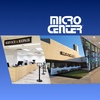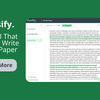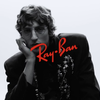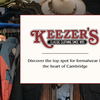"Not only am I a child genius, but I can blow a four-cuspid hypo-cycloid smoke ring."
A young man with motley Kentucky side-burns is talking to a pale blonde boy. The side-burns belong to Dan Gordon, a 16-year-old Exeter graduate who teaches phys-ed and math at the Palfry Street School in Watertown; the blonde hair belongs to his student, one year his junior, who despised the Cambridge public schools and so came to Palfrey.
At Palfry the Director plays recorder duets with his pupils; the math teacher is younger than his students; the dog under the classroom table is named Leo. The kids who hated school before are still hanging around after 6 p.m.
And nobody tries to shoo them out, since the rationale for this new school, according to Director Edward Ryerson, is to provide an exciting place for kids who have not achieved or enjoyed themselves in either private or public schools.
It is not rare for students to come to Palfrey with D and E averages which might disqualify them from admission to other private schools. In most cases faculty members claim that the small classes, the lack of competition for grades, and the easy communication with teachers has transformed their school careers.
No test scores are used to select candidates for admission and IQ scores are also disregarded. Reading and writing samples, school records and personal recommendations, "and a lot of intuiton" are taken into consideration, Ryerson explains. "We have kids who dropped out of high school. We have kids who, when they came, never thought they could go to college," he adds.
In a Foolish White House
The school is situated near Watertown Square in a foolish old white house with a large squat steeple and a barn behind. Its 18 rooms held 20 students last year, the school's first year, when the school had only grades nine and ten. By adding an eleventh grade this year the school has doubled its enrollment to 41.
The students are carefully chosen to represent a cross-section of metropolitan high schools, drawing almost half from public schools despite the high tuition rate of $1450. Twenty per cent of the students are on full scholarship and more are on partial scholarships.
Though the scholarships mean a drain on the small income of the school, Ryerson insists that the presence of the students holding scholarships is so essential that they would never be sacrificed. Private donations, added to the school's tuition, have thus far covered expenses.
Ryerson began to think about starting his own experimental school while teaching at Shady Hill, Brattle Street's private elementary school. Teaching English to the ninth grade there, one of his concerns was with placing students in secondary schools. "I was very dissatisfied," he said. "Private schools were taking only sure fire bets and public schools were effectively doing the same by putting such students in top sections."
An immensely popular teacher at Shady Hill, Ryerson is now the major force behind the Palfrey Street School. Working with his wife, Alice, the school psychologist, he is putting into practice his own theory of liberal education, teaches daily English classes, maintains a constant personal involvement in every detail of the problems of individual students and faculty members, as well as fulfilling his administrative duties.
How does he deal with the students who have not succeeded elsewhere? First, he discourages pressure and competition as motivation for work. "All they wanted before was intellectual excellence and quick answers," said one boy, referring to his former school. "A school like this inspires you, it doesn't force you."
But it is not only the classroom which has created the students' enthusiasm for their new school. "It's not all academics. Other things are stressed here," the boy added.
"Other things" include informal seminars on "race relations," "adolescence," and "child psychology," school clean-ups, Community Activities, and many, many meetings and discussions.
Read more in News
Coop to Confront Textbook Issue












